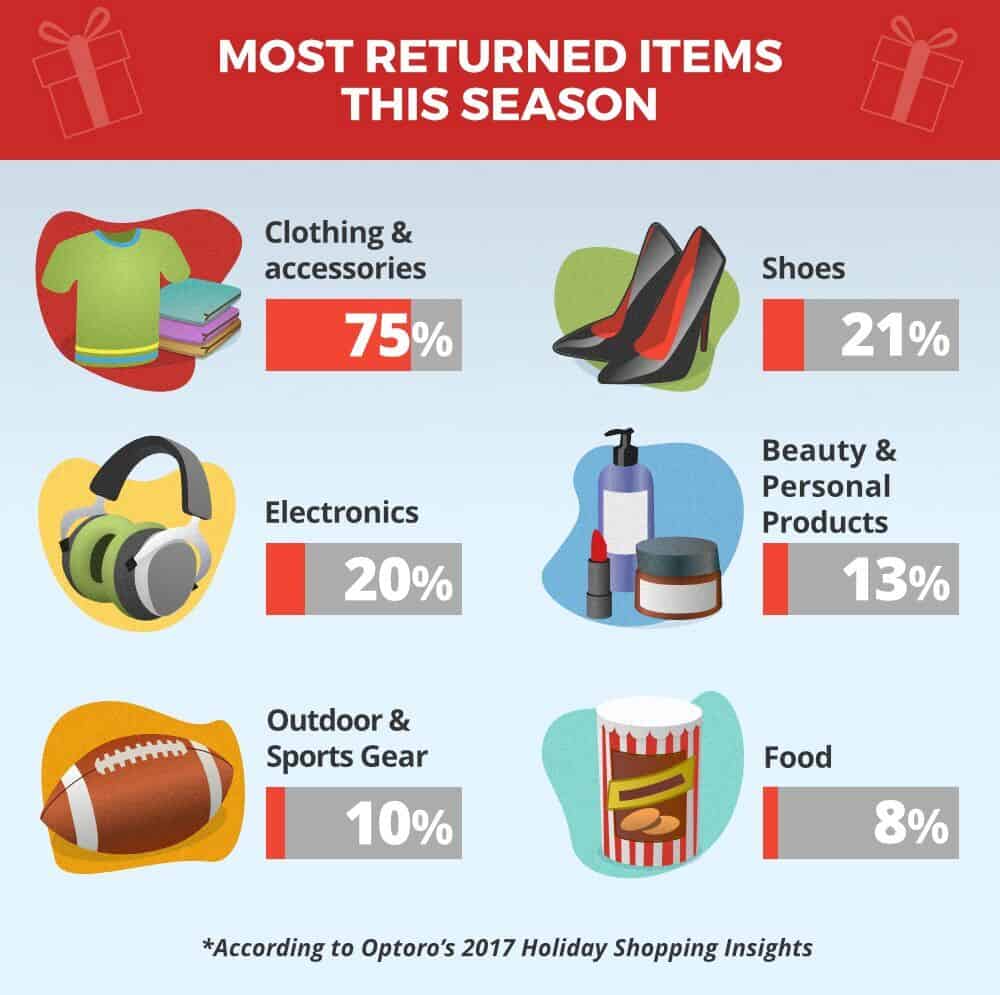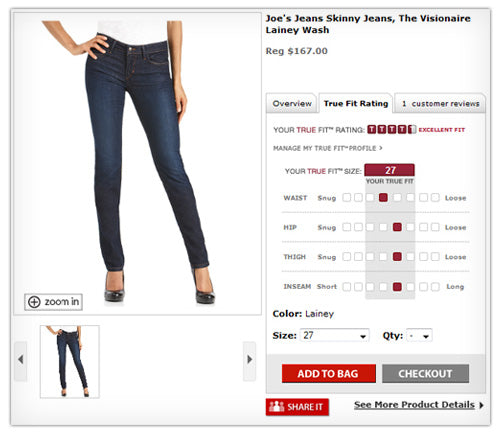January marks the start of the dreaded “returns season” for many retailers. In the wake of the busy holiday shopping period, many gift recipients end up returning unwanted or unneeded presents to their source. That means twice the number of returned parcels and a major uptick in the number of in-store returns.
According to data from RedStag Fulfillment and returns optimization firm Optoro, last year shoppers returned 28% of gifts at a value of $90 billion. Even if your products are brought back in good condition, those returns could still cost you anywhere from 20-65% of the cost of the goods—and that’s enough to give any retailer the January blues.

But customers who request refunds or exchange merchandise are a natural and expected part of the retail territory, particularly this time of year. Many of these transactions are valid, but a return policy also can be abused to extreme levels, costing store owners billions of dollars in sales.
💡 RECOMMENDED READING: Returnless Refunds 101: Everything Store Owners Need to Know
What is a ‘serial returner?’
Shoppers responsible for an excessive amount of returns are called “serial returners.” Some serial returners have dishonest intentions, while others suffer from an inability to control their shopping behavior.
According to a report by retail management firm Brightpearl, 42% of U.S. retailers say the number of serial returners has increased during the past 12 months, especially among customers aged 18 to 34.
One common type of serial return is known as “wardrobing”—ordering clothing to wear just once (usually without removing any tags) and then returning the item for a refund after use. This type of retail fraud often occurs with expensive items the shopper can’t afford to own.
A similar type of wardrobing takes place with tools and electronics at stores with generous return policies. Nearly 40% of retailers have experienced this type of return, according to Appriss Retail’s 2017 Consumer Returns in the Retail Industry report.
Refunds and serial returners: A costly problem
Serial returners, whether fraudulent or just fickle, cost retailers and their employees precious time and money. Overall, refunds represent an estimated $350 billion in lost sales for U.S. retailers each year, according to Appriss.
Return fraud or abuse represents 6.5% of total returns, worth almost $23 billion annually.
Returns can result in significant costs for online retailers, who increasingly are expected to offer free shipping and free returns. Additional costs include packing materials and staff time spent processing returns and preparing items for resale.
What can retailers do to prevent serial returns
In 2018, Amazon instituted a lifetime ban on customers who habitually return merchandise. The company’s decision prompted other retailers to review their return policy templates. According to a study from Brightpearl, 61% of U.S. retailers—including 80% in the baby and toddler category, 64% of consumer electronics firms, and 55% of all clothing and fashion retailers—say they’d ban serial returners permanently, while fewer than one-quarter are not inclined to.
Before serial returners can be banned, they need to be identified. Unfortunately, 44% of retailers surveyed say they don’t have the correct technology to identify problematic shoppers, while 15% don’t know if their technology could make a correct identification.
Some stores are identifying serial returners by accessing a customer’s “risk rating,” an assessment similar to a credit rating. The Retail Equation (TRE), a national database that keeps track of customer returns, offers software to help detect fraudulent and abusive behavior.
When a return is made, the cashier uses TRE software to scan the sales receipt as well as the customer’s driver’s license or state-issued ID. The system then provides a data-driven decision about the validity of the return using verifiable data—as opposed to traditional subjective guesswork by sales clerks—to identify shoppers with suspect return-and-exchange behavior. Implementing this strategy is relatively easy as it only requires the software and some light cashier training.
Other ways to curb refunds from serial returners
Banning serial returners might be the right decision for your store, but it still can come with risks. One-fifth of 18- to 24-year-old respondents to Brightpearl’s survey said they would never shop with a retailer that banned serial returners.
If a ban on recurring returns doesn’t resonate with your retail brand, here are a few alternate options to help reduce refunds and exchanges.
Improve sizing charts
Up to 30% of all online clothing purchases are returned, according to our Ecommerce Returns study. This type of return can be reduced by providing shoppers with detailed information about product sizes. The Shopify study found that 41% of online shoppers bought more than one size or variation of an item with the intent of returning a portion of their purchase.
Several companies are working to reduce this number by asking customers to provide their measurements and their fit preferences (such as loose, tight, or average) to help them purchase the right size the first time.

Retailers are also incorporating sizing tools, such as True Fit orVirtusize, that allow shoppers to compare the measurements of clothing they already own against items they’re interested in buying.
Provide better (and more) product information
Some retailers are improving product pages by providing the featured model’s measurements and the size of the items being shown. For non-clothing items, retailers are offering more product photos, including 360-degree views, videos, and augmented reality to help customers visualize products.
Charlotte Tilbury Westfield London Magic Mirror from Holition on Vimeo.
Customer reviews and the ability to ask a seller questions through a product page are additional ways to provide shoppers with more information.
FURTHER READING: Spur more sales with product reviews online. Learn how to encourage your shoppers to write customer reviews.
Reduce return time
To combat suspicious refunds, some retailers have shortened the amount of time they allow consumers to make a return.
Allowing a window of just 30 days can increase conversions by 57%, according to the Shopify study.
A shorter return time also reduces retailer uncertainty around inventory forecasting and budgets, as consumers often wait until the last minute to return items. The average return time is just two to three days before the end of the grace period—and an influx of last-minute returns or refunds can throw off your inventory management.
Clarify your return policy
Make sure your customers are aware of your store’s policy on refunds and exchanges, including details on the return time, any applicable fees, and whether they need the original receipt and price tags.

To ensure shoppers understand and are informed about your return policy, you can:
- Discuss your policy during checkout.
- Print the details of your policy on printed receipts.
- Include refund and exchange details in transaction emails.
- Display signage with your policy details in-store.
To encourage consumer buying behavior, the key is to craft a return policy that makes sense for your unique business and your unique customers. But more importantly, it’s vital to introduce a policy that has long-term customer engagement in mind.
FURTHER READING: Need help putting together some clear rules around refunds and exchanges? Learn how to create your own return policy for your retail brand.
Finding the right balance between policies and valid refunds
Ultimately, the decision to ban serial returners is up to you. All store policies require a balance between providing customers with a positive, rewarding experience and protecting your business in a manner that’s fair.
Whatever you decide, be transparent with your policies. One of your most valuable assets is your existing customer base: If you treat shoppers fairly, they’ll reward you with their business.
Read more
- 5 Ways Retailers Can Generate Revenue Outside of Business Hours
- Returnless Refunds 101: Everything Store Owners Need to Know
- Vision Board for Business: Use This Creative Tool to Accomplish Your New Year’s Resolutions
- Shoplifting: Why People Steal and How Retailers Can Prevent It
- Cutting Costs: 14 Ideas to Lower Retail Expenses Without Killing Product Quality
- Chargebacks 101: How to Prevent and Deal With Retail Chargebacks





